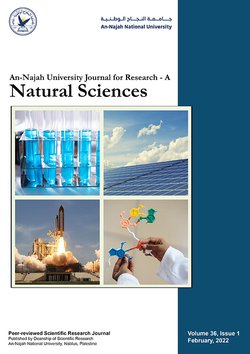Flood Routing Techniques for Incremental Damage Assessment
Authors:
Article info
1996-03-30
1998-11-25
1998-11-25
40 - 54
Keywords
Abstract
Incremental damage assessment (IDA) for dam safety evaluation determines whether or not a significant increase in flooding will result from dam failure. Since IDA depends on a prediction of downstream flooding with and without dam failure, it is essential that flood routing be performed using an appropriately selected and properly applied technique. Conclusions drawn from an IDA can be distorted if flood routing is inappropriately applied or if unrealistic breach parameters are used. In this paper, the results of a study which assesses the accuracy of alternative flood routing technique for use in IDA are reported. Flood routing techniques that are evaluated cover dynamic routing, kinematic, Muskingum-Cunge, and normal depth storage routing. These techniques were evaluated against the more accurate two-dimensional flood routing technique contained in the diffusion hydrodynamic model (DHM). The assessment was conducted for conditions which typify those that exist in Palestine. The goal of the study is to develop guidelines for selection of flood routing techniques for use in IDA and for interpreting IDA results in different settings. The overall outcome shows that the performance of one dimensional techniques in predicting peak stages performed very well when using a full one dimensional model especially in cases where there is a uniformity in the water course.
Jayyousi, A. (1998). Flood Routing Techniques for Incremental Damage Assessment. An-Najah University Journal for Research - A (Natural Sciences), 12(1), 40–54. https://doi.org/10.35552/anujr.a.12.1.387
[1]A. Jayyousi, “Flood Routing Techniques for Incremental Damage Assessment,” An-Najah University Journal for Research - A (Natural Sciences), vol. 12, no. 1, pp. 40–54, Jan. 1998, doi: 10.35552/anujr.a.12.1.387.
Jayyousi, Anan. “Flood Routing Techniques for Incremental Damage Assessment.” An-Najah University Journal for Research - A (Natural Sciences), vol. 12, no. 1, Jan. 1998, pp. 40–54. Crossref, https://doi.org/10.35552/anujr.a.12.1.387.
1.Jayyousi A. Flood Routing Techniques for Incremental Damage Assessment. An-Najah University Journal for Research - A (Natural Sciences) [Internet]. 1998 Jan;12(1):40–54. Available from: http://dx.doi.org/10.35552/anujr.a.12.1.387
Jayyousi, Anan. “Flood Routing Techniques for Incremental Damage Assessment.” An-Najah University Journal for Research - A (Natural Sciences) 12, no. 1 (January 1998): 40–54. https://doi.org/10.35552/anujr.a.12.1.387.
طرق متابعة الفيضانات لاستخدامها في حساب الأضرار التفاضلية
المؤلفون:
معلومات المقال
1996-03-30
1998-11-25
1998-11-25
40 - 54
الكلمات الإفتتاحية
الملخص
Incremental damage assessment (IDA) for dam safety evaluation determines whether or not a significant increase in flooding will result from dam failure. Since IDA depends on a prediction of downstream flooding with and without dam failure, it is essential that flood routing be performed using an appropriately selected and properly applied technique. Conclusions drawn from an IDA can be distorted if flood routing is inappropriately applied or if unrealistic breach parameters are used. In this paper, the results of a study which assesses the accuracy of alternative flood routing technique for use in IDA are reported. Flood routing techniques that are evaluated cover dynamic routing, kinematic, Muskingum-Cunge, and normal depth storage routing. These techniques were evaluated against the more accurate two-dimensional flood routing technique contained in the diffusion hydrodynamic model (DHM). The assessment was conducted for conditions which typify those that exist in Palestine. The goal of the study is to develop guidelines for selection of flood routing techniques for use in IDA and for interpreting IDA results in different settings. The overall outcome shows that the performance of one dimensional techniques in predicting peak stages performed very well when using a full one dimensional model especially in cases where there is a uniformity in the water course.
Jayyousi, A. (1998). Flood Routing Techniques for Incremental Damage Assessment. An-Najah University Journal for Research - A (Natural Sciences), 12(1), 40–54. https://doi.org/10.35552/anujr.a.12.1.387
[1]A. Jayyousi, “Flood Routing Techniques for Incremental Damage Assessment,” An-Najah University Journal for Research - A (Natural Sciences), vol. 12, no. 1, pp. 40–54, Jan. 1998, doi: 10.35552/anujr.a.12.1.387.
Jayyousi, Anan. “Flood Routing Techniques for Incremental Damage Assessment.” An-Najah University Journal for Research - A (Natural Sciences), vol. 12, no. 1, Jan. 1998, pp. 40–54. Crossref, https://doi.org/10.35552/anujr.a.12.1.387.
1.Jayyousi A. Flood Routing Techniques for Incremental Damage Assessment. An-Najah University Journal for Research - A (Natural Sciences) [Internet]. 1998 Jan;12(1):40–54. Available from: http://dx.doi.org/10.35552/anujr.a.12.1.387
Jayyousi, Anan. “Flood Routing Techniques for Incremental Damage Assessment.” An-Najah University Journal for Research - A (Natural Sciences) 12, no. 1 (January 1998): 40–54. https://doi.org/10.35552/anujr.a.12.1.387.
An-Najah National University
Nablus, Palestine
Nablus, Palestine
- P.O. Box
- 7, 707
- Fax
- (970)(9)2345982
- Tel.
- (970)(9)2345560
- (970)(9)2345113/5/6/7-Ext. 2628
- [email protected]
- EIC
- Prof. Ismail Warad
An-Najah University Journal for Research - A (Natural Sciences) by An-Najah University, Nablus, Palestine is licensed under CC BY-NC 4.0
